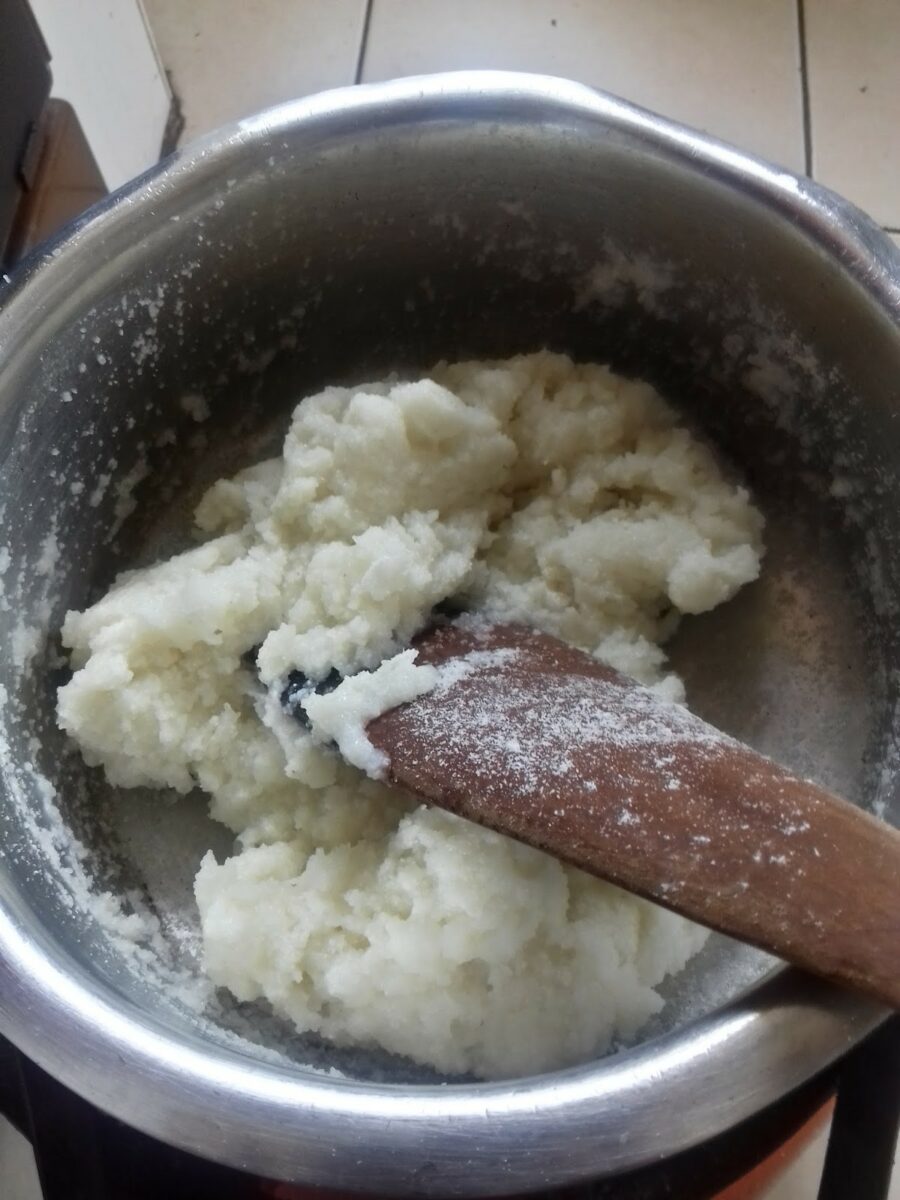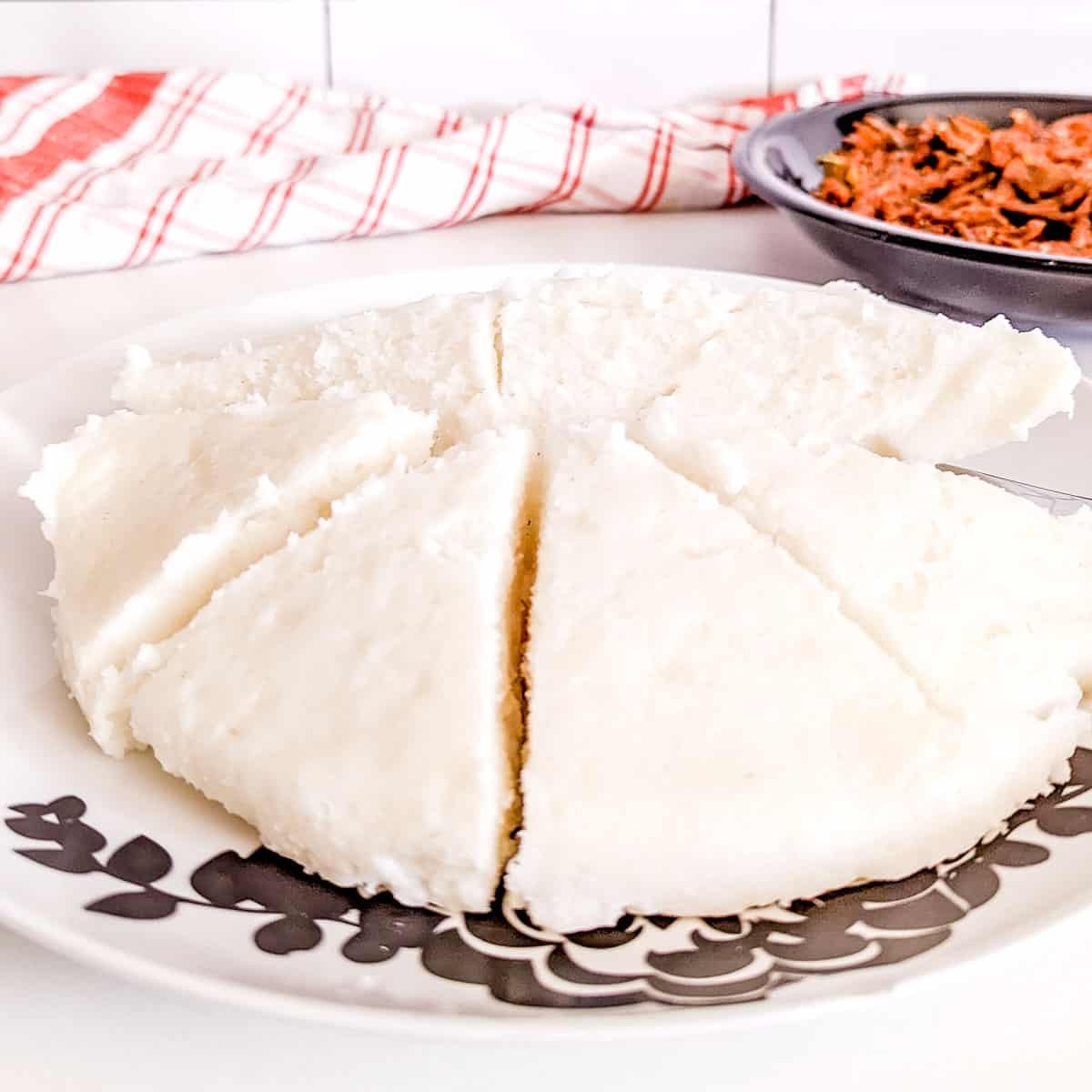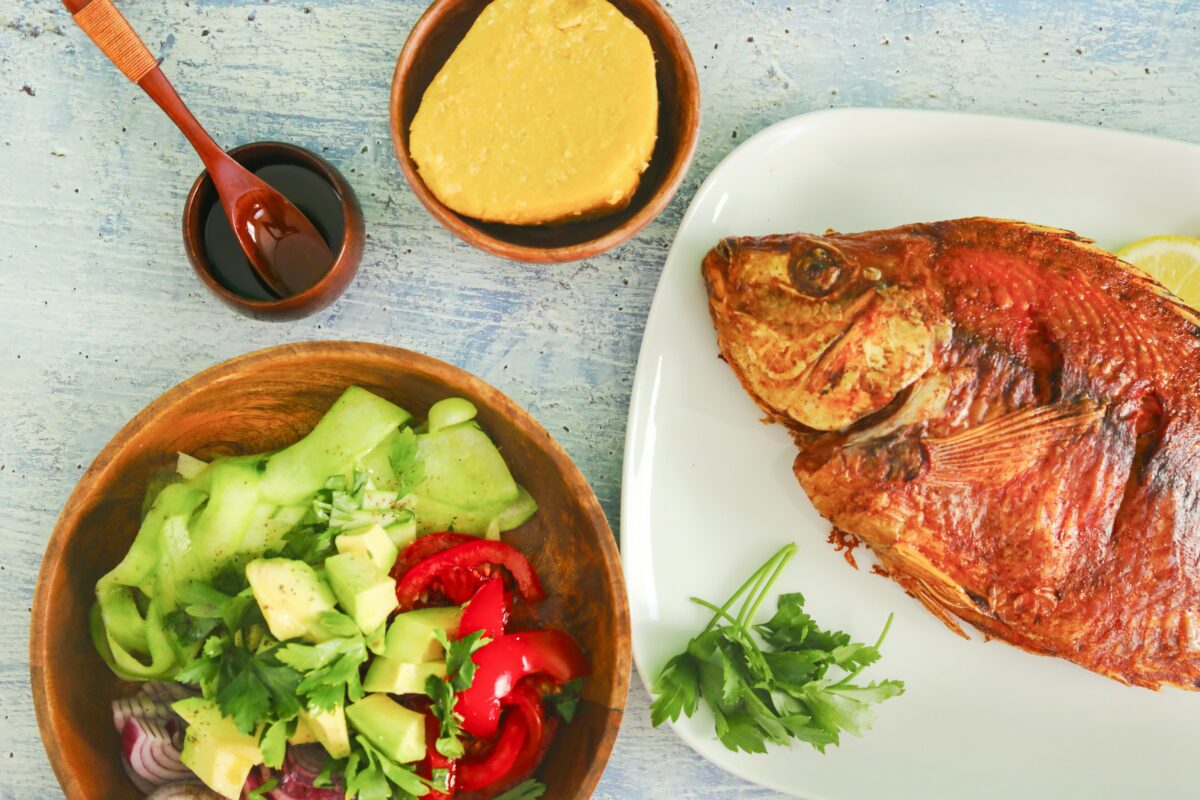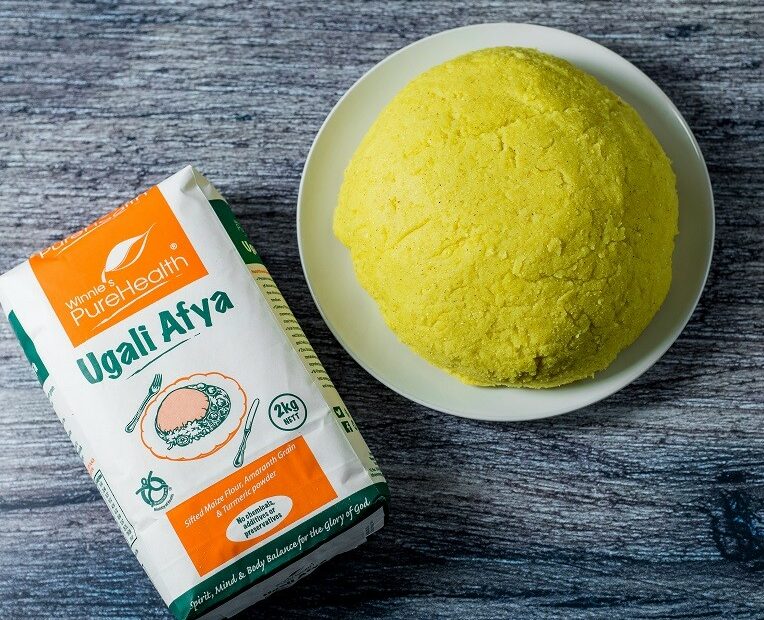Ugali is a versatile African staple with unwavering taste that transcends borders with diverse names such as “Sadza” in Zimbabwe and Zambia, “Nsima” in Malawi, “Pap” in South Africa, and “Tuwo” in Nigeria. A simple yet powerful dish, embodies the essence of African culinary heritage. Ugali’s recipe is composed mainly of maize flour and water, its preparation methods vary, but share cultural significance ties making ugali a symbol of tradition across the continent. In the this article, we shall guide you on how to cook ugali

Brief History of Ugali
With solid information from the Culture trip website, ugali has a long history dating back to pre-colonial times, originating from native grains which were ground into flour and cooked with water to form a thick porridge-like consistency, formerly known as ugali. It is made from maize flour (cornmeal), though other grains such as millet, cassava or sorghum can be used to cook ugali, depending on preferability and availability.
During the colonial period, the popularity growth of ugali in Kenya and other African countries can be attributed to its affordability, simplicity and nutritional value. Overtime, ugali has become deeply embraced in the cultural and culinary traditions of African communities solidifying its status as a staple food.
While its basic ingredients and preparation methods remain consistent, some regions add their own unique spin to the dish making the ugali recipe bring a variation in the texture and flavoring. Ugali plays and enduring role as a central dish in the daily lives of millions of people throughout the African continents.
Its ingredients help sustain energy making it a satisfying meal. Ugali unveils itself as a symbol of African cuisine and heritage through its ever-growing enduring popularity and widespread consumption. Despite the introduction of modern foods , ugali has topped as a loveable meal.
Ingredients of ugali:
A dive into the ugali recipe, as here are the ingredients required for one to be able to cook ugali:
- 3-4 cups of water per serving.
- 1-2 cups of maize flour (cornmeal) per serving.
- A pinch of salt (optional).
Instructions on How to cook ugali
- Place a cooking pot on a flame.
- Add 4 cups of water preferable to you and wait for it to boil.
- Scoop some water out and reduce the heat to medium low.
- Gradually add 2 cups of maize flour per serving as you stir with a wooden spoon or spatula.
- Using the wooden spoon, stir continuously in water until smooth to avoid lumps.

6. If you notice that the dough is dense, you can add the scooped water from earlier and if you feel inconsistency running in the dough, add bits of maize flour and stir vigorously.
7. Turn the heat back up and let the ugali cook while spinning it.
8. Let it cook or bake for 2 – 4 minutes while molding into a ball-like form.
9. Once an aroma fills the room and beneath the pot turns brown, your ugali is ready!
10. Remove it from the heat and place on a plate. READ ALSO: Major African lakes: Exploring the 7 biggest lakes in Africa
11. Let it sit for a few minutes, then use a wet spoon or your hands to shape the ugali into a round or oval form.
12. Serve the ugali alongside your favorite stew, vegetables, or any desired accompaniment.
Role of Ugali in Culinary Traditions
Ugali holds significant cultural and traditional importance in many African communities, particularly in East and Southern Africa. Its role extends beyond being a staple food; it plays a vital part in various traditions such as:
- Culinary Staple: Ugali is a fundamental part of daily meals, often served with stews or meats. Its simplicity makes it a versatile accompaniment to a wide range of dishes.
- Social Gatherings: Ugali is often shared during communal meals, as most communities cook ugali to foster a sense of togetherness amongst communities. It is a symbol of unity and sharing among family and friends.
- Ceremonial Occasions: In many cultures, ugali is a must-have dish during special occasions, celebrations, and ceremonies. It is present at events like weddings, funerals, and religious ceremonies.
- Cultural Identity: How to cook ugali is deeply rooted in cultural identity. Different regions have variations in their communities ugali recipe, contributing to the diversity of culinary traditions.
- Connection to Ancestry: Ugali is a link to ancestral traditions and the agricultural heritage of many African communities. Its reliance on locally available ingredients connects people to the land and their roots.

Health Benefits of preparing Ugali
Ugali, being a staple food in many African diets, Standard media provides several health benefits ugali holds, such as
- Rich in Carbohydrates: Ugali is primarily made from maize flour, providing a good source of complex carbohydrates. These carbohydrates are essential for energy production and are a key component of a balanced diet.
- Low in Fat: Ugali is typically low in fat, making it a healthy option for those looking to manage their fat intake. It can be part of a heart-healthy diet.
- Source of Fiber: Depending on the type of maize used, ugali can be a good source of dietary fiber. Fiber is essential for digestive health and can help prevent constipation.
- Nutrient Content: Maize flour used in ugali contains essential nutrients such as iron, magnesium, and B-vitamins. These nutrients play crucial roles in various bodily functions, including metabolism and the formation of red blood cells.
- Gluten-Free: Ugali is naturally gluten-free, making it suitable for individuals with gluten sensitivity or those following a gluten-free diet.
- Weight Management: The high fiber content in ugali can contribute to a feeling of fullness, promoting satiety. This can be beneficial for those looking to manage their weight by reducing overall food consumption.
- Cultural Connection to Local Ingredients: In regions where ugali is consumed, it is often made with locally sourced maize. This cultural connection to local, seasonal ingredients aligns with the principles of sustainable and seasonal eating. READ ALSO: 10 African Countries with the Best Street Food Culture
Global Influence of Ugali
Ugali has a significant global influence, particularly within the African diaspora communities and among those interested in diverse culinary experiences. Here are some ways in which ugali has made an impact:
- Culinary Diversity: Cooking ugali has introduced a taste of African cuisine to a global audience. As interest in diverse and authentic foods grows, ugali has become a symbol of the rich culinary traditions of Africa.
- Diaspora Communities: African diaspora communities around the world, especially in Europe, North America, and other continents, continue to prepare and enjoy ugali. This helps maintain cultural connections and provides a taste of home for those living abroad.
- International Events: Ugali is occasionally featured in international food festivals, culinary events, and exhibitions, contributing to the global appreciation of African cuisine.
- Social Media and Online Platforms: The sharing of recipes, cooking videos, and cultural stories related to ugali on social media platforms has increased its visibility globally. This exposure has sparked curiosity and interest in trying African dishes.
- Health and Nutrition: As people become more health-conscious, the nutritious aspects of ugali, such as being gluten-free, low in fat, and a source of complex carbohydrates, contribute to its appeal as a wholesome food choice.
- Cultural Exchange: Ugali serves as a medium for cultural exchange, allowing individuals from different backgrounds to learn about African traditions and culinary practices. This exchange fosters understanding and appreciation for diverse cultures.
- Tourism: In regions where ugali is a staple, tourism often includes experiences of local cuisine. Visitors are introduced to ugali as part of the cultural immersion, creating a positive association with African culinary heritage. READ ALSO: 7 Kenyan dishes to savour while exploring the country

Diverse names and different modes of How to cook ugali
Ugali goes by different names in various countries across Africa, and its preparation methods may also vary. Here are some examples:
1. Kenya and Tanzania: Ugali or Sima
- Ingredients: Maize flour, water.
- Method: Boil water, add maize flour gradually, and stir continuously to achieve a thick consistency. Simmer until well-cooked, then shape into a round or oval form.
2. Zimbabwe and Zambia: Sadza
- Ingredients: Maize meal, water.
- Method: Boil water, gradually add maize meal while stirring to avoid lumps. Continue stirring until a thick consistency is achieved. Serve in portions and shape as desired.
3. Malawi: Nsima
- Ingredients: Maize flour, water.
- Method: Like other variations, nsima is prepared by gradually adding maize flour to boiling water and stirring until it forms a thick porridge-like consistency.
4. Rwanda and Burundi: Ugali or Umutsima
- Ingredients: Maize flour, water.
- Method: The preparation is similar to other variations, involving boiling water and gradually adding maize flour while stirring.
5. Nigeria: Tuwo or Ogi
- Ingredients: Cornmeal or sorghum flour, water.
- Method: Tuwo is often made by boiling water and gradually adding cornmeal while stirring. Ogi is a fermented version of cornmeal or sorghum, resulting in a smoother consistency.
6. South Africa: Pap
- Ingredients: Maize meal, water.
- Method: Boil water and add maize meal while stirring. Cook until it thickens, and then reduce heat to let it simmer. It can be served as a side dish with various accompaniments.
Partying Shot on How to cook ugali
One can never go wrong with the enticing dish of ugali with a side of stew. Sure to make you jump back to work if energy had faded away. It’s natural form of harvesting shows vividly how the dish is full of natural nutrients. A fun fact is also that some communities tend to roll a small ball of ugali and hit it hard on the wall, and if it sticks then it means the meal is fully cooked and ready to eat.



